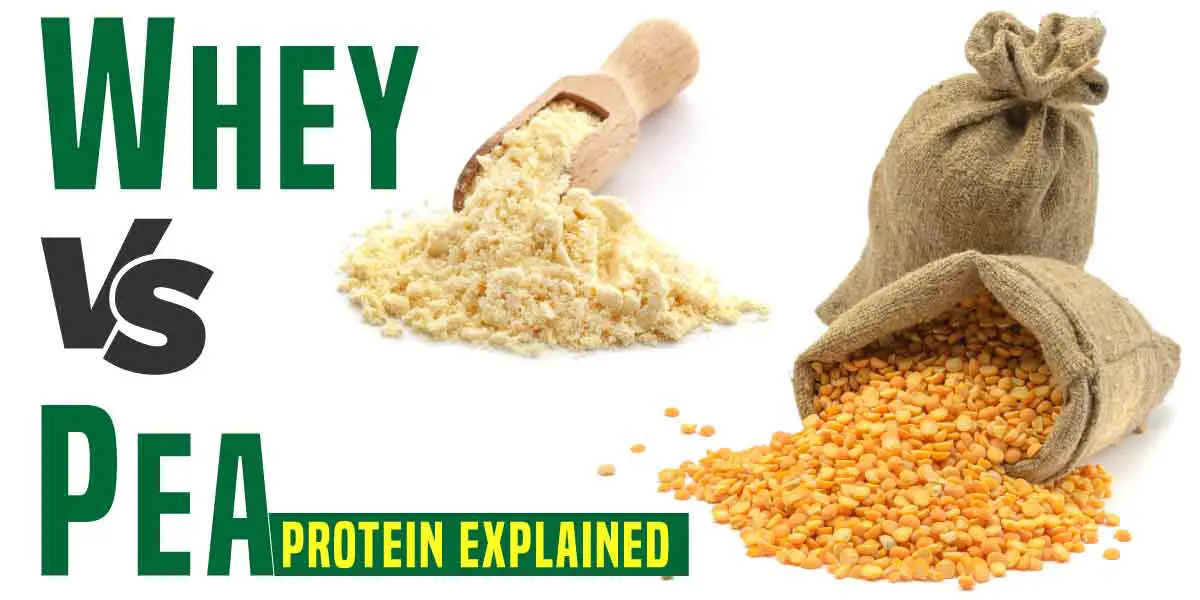Pea Protein vs Whey: Which One Is Right for Your Business?
March 21, 2025

Did you know that 65% of the global population is lactose intolerant? (World Population Review) For businesses in the food and beverage manufacturing industry, this statistic is critical when formulating products that cater to a wider audience. The choice between pea protein vs whey is no longer just about personal preference—it’s a strategic decision that impacts product formulation, market positioning, and supply chain efficiency.
Protein plays a crucial role in functional food production, sports nutrition, and plant-based innovations. Whether you’re a business owner, product developer, or food scientist, understanding the nutritional properties, digestibility, and functional benefits of different protein sources can give you a competitive edge in today’s evolving market.
This article provides a detailed comparison between pea protein and whey protein, helping businesses determine which is best suited for their target markets, production requirements, and sustainability goals.
What Is Pea Protein?
Pea protein is a plant-based protein extracted from yellow split peas. It has gained traction in the food manufacturing sector as a dairy-free protein alternative, particularly in the vegan, allergen-free, and functional food categories.
Key Benefits for Manufacturers:
- Allergen-free and vegan-friendly – Expands market reach by catering to lactose-intolerant and plant-based markets.
- Rich in iron – Adds nutritional value, reducing the need for additional fortification in plant-based products.
- Mild taste and texture – Makes it an ideal protein for beverages, snacks, and meal replacements.
- Stable supply chain – Pea protein is less volatile in pricing compared to dairy-based proteins.
- Environmentally sustainable – Requires less water and land compared to animal-based protein sources.
What Is Whey Protein?
-
Whey protein is a dairy-derived protein known for its superior bioavailability and muscle-building properties. It has been widely used in sports nutrition, meal replacements, and functional food applications.
Why Businesses Use Whey Protein:
- High bioavailability – Ensures rapid protein absorption rate, making it ideal for post-exercise recovery products.
- Proven muscle-building properties – Extensively backed by research in sports and clinical nutrition.
- Diverse applications – Used in protein powders, bars, RTD beverages, and meal replacements.
Nutritional Comparison: Pea Protein vs. Whey Protein
For food product development, understanding macronutrient composition is key. Below is a comparative analysis of both protein sources per 30g serving:
|
Nutrient |
Pea Protein (per 30g) |
Whey Protein (per 30g) |
|
Calories |
~120 kcal |
~110 kcal |
|
Protein |
~24g |
~25g |
|
Carbohydrates |
~1-2g |
~2-3g |
|
Fats |
~2g |
~1.5g |
|
Iron |
~35% of RDI |
~2% of RDI |
Key Takeaways:
- Pea protein offers a competitive protein content while delivering added iron benefits.
- Whey protein remains the fastest-absorbing protein for immediate post-workout muscle recovery.
Digestibility and Allergen Considerations
For businesses developing gut-friendly and allergen-free products, digestibility is a key factor.
- Whey Protein Digestion: Contains lactose, which may cause bloating and discomfort in lactose-intolerant markets.
- Pea Protein Digestion: Naturally lactose-free and hypoallergenic, ideal for markets with dairy sensitivities.
Business Implication:
Food manufacturers focusing on clean-label formulations should consider pea protein to cater to markets with digestive concerns.
Which Protein Is Better for Muscle Growth?
The sports nutrition industry is one of the largest markets of protein powders, making muscle growth a critical consideration.
- Whey protein is absorbed within 30–90 minutes, making it ideal for post-exercise recovery.
- Pea protein digests slower (2–4 hours) but provides sustained amino acid release, making it suitable for meal replacements and endurance nutrition.
- Industry Insight: A study in the Journal of the International Society of Sports Nutrition found that pea protein supports muscle development at a rate comparable to whey protein over a 12-week training period.
Market Trends and market Demand
Rising Demand for Plant-Based Proteins
- The global plant-based protein market is projected to reach $23.4 billion by 2028, driven by vegan and flexitarian markets.
- Many brands are shifting towards pea protein to meet clean-label and sustainability trends.
Sustainability Considerations
- Pea protein production generates fewer greenhouse gas emissions than whey.
- Whey protein, while efficient, contributes to dairy industry emissions and requires more land and water.
Best Use Cases for Food Manufacturers
When to Choose Pea Protein:
- Developing vegan, allergen-free, or plant-based food products.
- Targeting sustainable and health-conscious markets.
- Formulating RTD shakes, snack bars, and meat alternatives.
When to Choose Whey Protein:
- Targeting sports and fitness nutrition markets.
- Developing high-performance muscle recovery products.
- Creating products where fast protein absorption is key.
Conclusion: Which Protein Suits Your Business Needs?
Both pea protein and whey protein have distinct advantages for food and beverage manufacturers. The right choice depends on target demographics, product functionality, and sustainability goals.
For businesses looking to expand into the plant-based sector, pea protein offers an allergen-free, sustainable option. Meanwhile, whey protein remains a trusted solution in the fitness and clinical nutrition industries. 👉 Explore premium protein ingredients for your next product innovation at Satoria Nutrisentials!